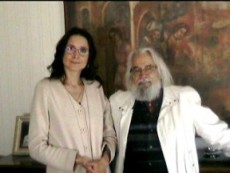Probably the most often mentioned goal of any strength and conditioning program, amongst other common training targets, is injury prevention. Obviously, injury prevention is very important. If an athlete is injured, they may not be able to play to their full potential, if at all. But does this mean we have to program specific, injury prevention exercises?

We definitely have an abundance of “pre-hab” or corrective exercises used in weight rooms across the world today. However, I think that the most overlooked, and possibly under-rated principle, when it comes to this topic, is Verkhoshansky’s, Dynamic Correspondence. This principle utilizes five criteria to define specialized means of training (as compared to the competition exercise):
1. Same muscle groups
2. Same range of motion
3. Emphasis portion of the range of motion
4. Magnitude of force and duration applied
5. Same type of muscular contraction
In short, what I’m saying is that specialized training in and of itself, is injury prevention. We should prepare our athletes for whatever they will see in competition. This process starts with GPP, where we train every joint action and muscle group. As we progress, Dynamic Correspondence should become increasingly more important. Specialized exercises that mimic the exact joint actions seen in competition should be added in. These exercise should be executed in such a way that places emphasis on the portions of the range of motion where the most force is produced. Eventually, and gradually throughout the process, exercises will be carried out with greater speed and force to more closely relate to those in competition. Don’t forget that the Shock Method was originally developed by Dr. Verkhoshansky as a means to recreate the level of force impact in the triple jump.

Of course an athlete can be injured due to poor technique (which specialized exercises can help to improve). However, if technique is sound, an injury develops because that tissue simply cannot withstand the forces acting upon it. Thus, one of the primary ways to prevent injury is to be sure your training, in various ways, fulfils the principle of Dynamic Correspondence.
We are hoping to provide the best possible content for strength coaches with each of our shows. If feel this could provide value for anyone else in the strength and conditioning field please feel free to share.
Enjoy the content? Then you should check out The Strength Coach Network!
You can find sensational content just like this in The Strength Coach Network. As a member of The Strength Coach Networks, you can access over 200 hours of the highest-level lecture content just like this one for 48 hours for only $1. Follow the link below to sign up and use the code CVASPS at check out to get a 48 hour trial for only $1. Check out The Strength Coach Network Here! https://strengthcoachnetwork.com/cvasps/
#StrengthCoach, #StrengthAndConditioningCoach, #Podcast, #LearningAtLunch, #TheSeminar, #SportsTraining, #PhysicalPreparation, #TheManual, #SportTraining, #SportPerformance, #HumanPerformance, #StrengthTraining, #SpeedTraining, #Training, #Coach, #Performance, #Sport, #HighPerformance, #VBT, #VelocityBasedTraining, #TriphasicTraining, #Plyometrics

